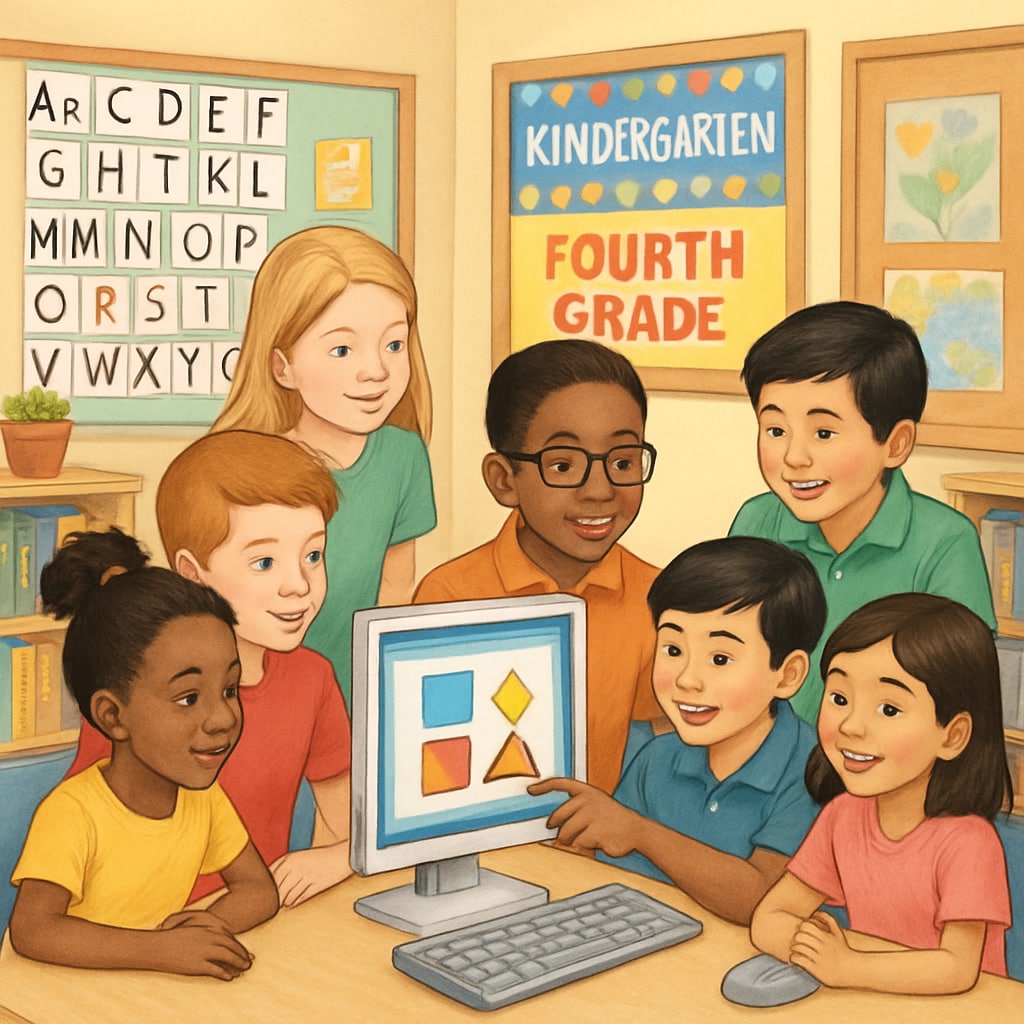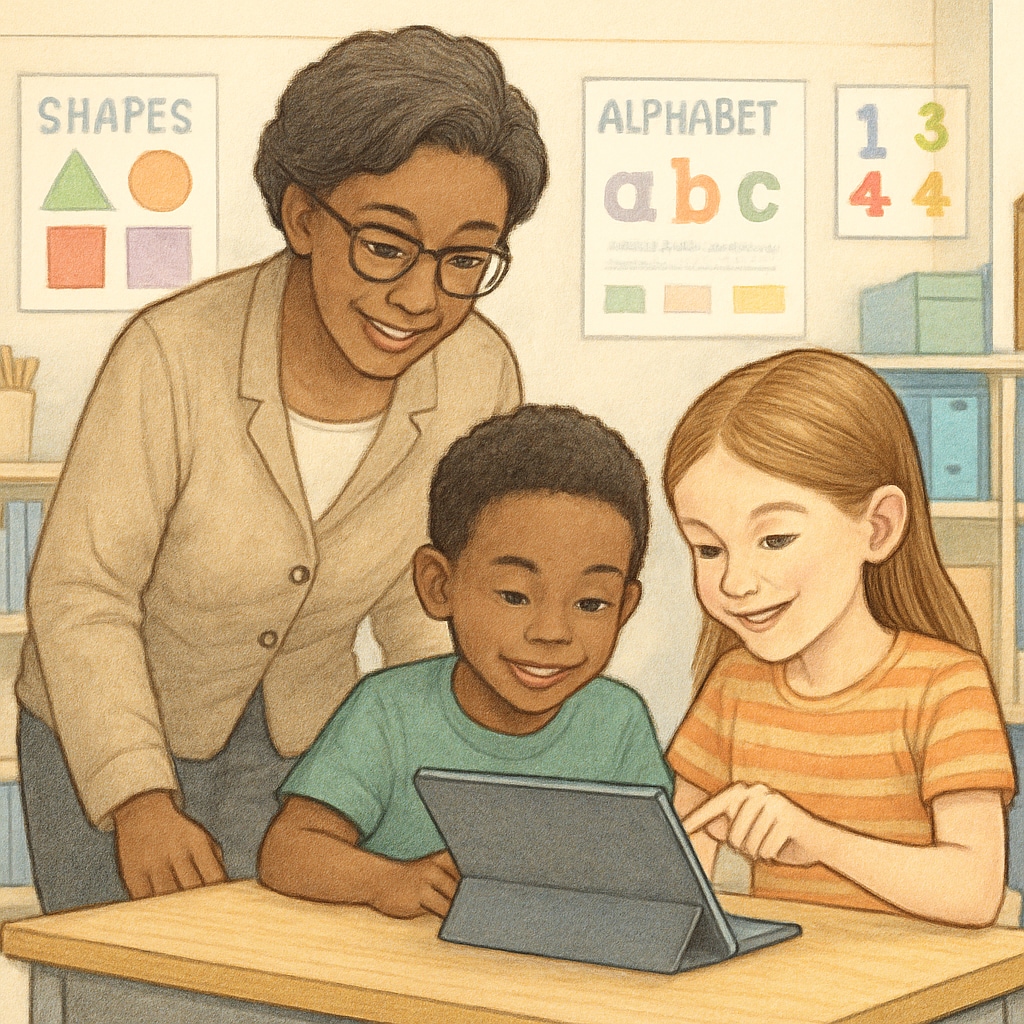Implementing a structured kindergarten partner project that incorporates cross-age educational activities and computer skills learning offers immense value for both younger and older students. These carefully designed interactions encourage collaboration, foster empathy, and build essential digital literacy skills. By combining hands-on activities with technology, educators can create a unique space where kindergarteners and fourth graders learn together, leveraging one another’s strengths to achieve mutual growth.
Why Cross-Age Educational Activities Matter
Pairing kindergarteners with fourth graders in structured learning activities allows students to experience the benefits of collaborative education in a meaningful way. Younger children develop confidence and improve their communication skills by interacting with older peers, while fourth graders enhance their leadership and mentoring abilities. Moreover, engaging in shared tasks provides both groups with opportunities to learn from one another in a natural, supportive environment.
Studies have shown that cross-age learning fosters social-emotional growth and helps students develop a deeper understanding of teamwork. For example, when older students assist younger ones in mastering computer skills, they reinforce their own knowledge while introducing foundational concepts in a way that’s accessible and engaging. This dynamic not only builds interpersonal skills but also promotes a love for learning.

Six Engaging Computer-Based Activities for Cross-Age Learning
Below are six recommended activities that combine structured learning with opportunities for independent exploration. These activities are designed to suit the developmental needs of both kindergarten and fourth-grade students, ensuring that participants can work together effectively.
- Digital Storytelling: Pair students to create a short digital story using simple tools like StoryJumper. Kindergarteners can contribute ideas and illustrations, while fourth graders handle typing and formatting tasks.
- Basic Programming with Blockly: Introduce foundational coding concepts using beginner-friendly platforms like Code.org. Fourth graders can guide kindergarteners through drag-and-drop coding exercises.
- Interactive Educational Games: Utilize platforms like Starfall to engage students in math and literacy games. Kindergarteners benefit from the visual aids, while fourth graders help explain instructions.
- Digital Art Projects: Use simple software like Paint or Canva to create collaborative art pieces. Kindergarteners can draw shapes or add colors, and older students can refine the designs.
- Virtual Field Trips: Explore virtual tours of museums or zoos together. Fourth graders can help navigate the experience and explain points of interest to their younger partners.
- Online Puzzle Challenges: Engage in problem-solving activities on platforms like Jigsaw Explorer. Kindergarteners handle matching pieces, while fourth graders assist with overall strategy.
These activities are ideal for fostering teamwork and helping students develop computer literacy in a fun, interactive way. By incorporating both guided and independent components, educators can ensure that each student remains actively engaged.
Implementation Tips for Educators
To maximize the effectiveness of cross-age educational activities, educators should follow a few best practices:
- Pair Students Thoughtfully: Match students based on compatibility, ensuring that both partners can contribute meaningfully to the activity.
- Provide Clear Instructions: Set clear expectations and explain the goals of each activity to both age groups before beginning.
- Encourage Open Communication: Foster an environment where students feel comfortable asking questions and sharing ideas.
- Monitor Progress: Circulate during activities to provide guidance and ensure that all pairs stay on track.
- Reflect and Share: After each session, encourage students to share their experiences and discuss what they learned.
By incorporating these strategies, teachers can create a positive, productive learning environment where students of different ages thrive together.

The Long-Term Benefits of Cross-Age Learning
The benefits of cross-age educational activities extend far beyond the classroom. Kindergarteners gain valuable exposure to technology and social skills, while fourth graders develop empathy, leadership, and responsibility. These experiences lay the foundation for lifelong learning and collaboration, equipping students with the skills they’ll need in an increasingly digital world.
Moreover, integrating computer-based activities into cross-age programs helps students build digital literacy—a critical skill in today’s education landscape. By starting early, educators can ensure that students are prepared to navigate future challenges with confidence and competence.
In conclusion, kindergarten partner projects that involve cross-age educational activities and computer skills learning create a unique opportunity for mutual growth. By fostering collaboration and leveraging age-appropriate technologies, educators can build a bridge between age groups, promoting a shared love for learning and discovery.


